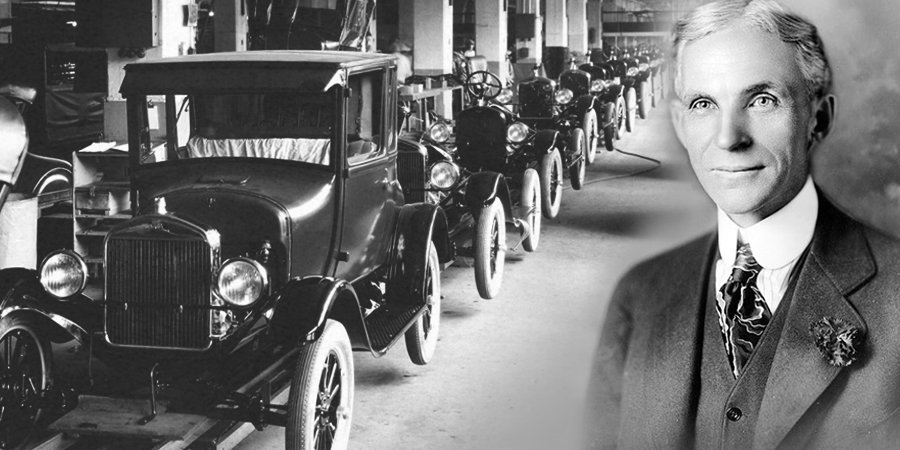Henry Ford, the man behind the iconic Model T, was one of the most influential figures in the history of modern manufacturing and the automobile industry. His innovations not only transformed the way cars were made but also revolutionized industries worldwide. Ford’s legacy is still felt today, and his impact goes far beyond just the automobile. In this article, we’ll explore fun facts about Henry Ford, the man who brought affordable automobiles to the masses and forever changed the face of transportation.
The Birth of Henry Ford
Henry Ford was born on July 30, 1863, on a farm in Dearborn, Michigan, a suburb of Detroit. From an early age, Ford had a fascination with machinery and engines. As a child, he was known for taking apart and reassembling mechanical devices around the farm. His interest in engineering was so strong that, even though he had little formal education, he went on to become one of the world’s most important industrialists.
Despite growing up in a rural environment, Ford was determined to push boundaries. He left home at 16 to work as an apprentice machinist, and by 1891, he was working as an engineer at the Detroit Edison Company. It was during this time that Ford developed an interest in automobiles, eventually leading to the creation of the Ford Motor Company in 1903.
Henry Ford’s First Car: The Quadricycle
Before the Model T, Ford’s first major invention was the Quadricycle, a simple vehicle powered by a gasoline engine. In 1896, Ford successfully built and tested the four-wheeled, horseless carriage in his workshop. The Ford Quadricycle was rudimentary but groundbreaking. This early prototype laid the foundation for Ford’s future achievements and ignited his passion for creating a vehicle that could be mass-produced and affordable for average American families.
Interestingly, Ford’s first car was so basic that it only had two gears: a forward gear and a reverse. It didn’t even have brakes, so to stop, Ford had to turn the car’s engine off and let it coast to a halt! Nonetheless, the Quadricycle was a major milestone in automotive history and set the stage for what was to come.
The Model T: A Game-Changer
The Model T was the car that made Henry Ford a household name and revolutionized the automotive industry. Released in 1908, the Model T was designed to be affordable, durable, and easy to maintain. Ford’s idea was to create a car that the average American worker could buy and use. At a price of around $850 at launch (which would be roughly $23,000 today adjusted for inflation), the Model T was a significant step forward in making cars accessible to the masses.
What set the Model T apart was its simplicity. It was designed with few parts and was easy to repair. Unlike earlier cars, which required special knowledge to fix, the Model T could be repaired by most car owners themselves. This was a major selling point for Ford, who wanted to make his cars practical for every family.
The Model T was an instant success, with over 15 million cars produced by the time Ford stopped making them in 1927. It became known as the “car for the common man” and played a key role in shaping the modern American landscape.
Ford’s Assembly Line: Revolutionizing Manufacturing
One of Ford’s most significant contributions to industry was his introduction of the moving assembly line in 1913. Ford didn’t invent the assembly line, but he was the first to implement it on a large scale for automobile production. By streamlining the manufacturing process, Ford was able to reduce the time it took to build a Model T from 12 hours to just 90 minutes.
The moving assembly line was a game-changer for the manufacturing industry. It allowed Ford to produce cars faster and more efficiently, reducing costs and making the Model T affordable to a much larger market. The assembly line not only revolutionized car production but also set the standard for industrial production in virtually every sector, from electronics to consumer goods.
In addition, Ford increased the wages of his workers to $5 a day, a significant amount at the time. This move was both a business strategy and a humanitarian effort, as it enabled his workers to afford the cars they were producing. By paying workers a living wage, Ford helped build a strong middle class and fostered a sense of loyalty and pride in his workforce.
Henry Ford’s Personal Beliefs and Controversies
While Ford is often celebrated for his business acumen, he also had some controversial views and practices. He was a vocal supporter of anti-Semitic ideas, publishing a series of articles in his newspaper, The Dearborn Independent, that espoused anti-Jewish rhetoric. Ford later publicly apologized for his actions, and his company distanced itself from those views. However, his earlier beliefs remain a dark spot on his legacy.
Ford was also known for his strong opinions on socialism and labor unions. He was initially resistant to unionization and tried to maintain tight control over his workers. However, as his company grew and faced labor unrest, Ford eventually became more open to labor unions and established better working conditions.
The Legacy of Henry Ford
Henry Ford’s contributions to the world are immeasurable. He transformed the automobile from a luxury item for the wealthy into a practical tool for the masses, forever changing transportation and society. Beyond the Model T, Ford’s innovations in manufacturing, labor relations, and business management have influenced industries worldwide.
Ford’s influence is still seen today in the structure of modern manufacturing, where efficiency and mass production are paramount. He laid the groundwork for the automobile industry as we know it, and his legacy endures in every vehicle rolling off assembly lines around the world.
Conclusion
Fun facts about Henry Ford reveal a man whose ingenuity and vision helped shape the modern world. From the Quadricycle to the revolutionary Model T, Ford’s impact on the automobile industry is undeniable. His introduction of the moving assembly line changed manufacturing forever, making mass production of goods a reality. Though his personal views and controversies add complexity to his legacy, there’s no denying that Henry Ford was an innovator who helped build the world we live in today.
Ford’s achievements go beyond just the Model T—they represent the story of how a single individual can change the course of history. His legacy continues to inspire innovation and efficiency in industries around the globe, cementing his place as one of the most influential figures of the 20th century.



